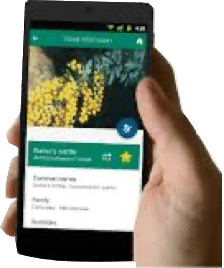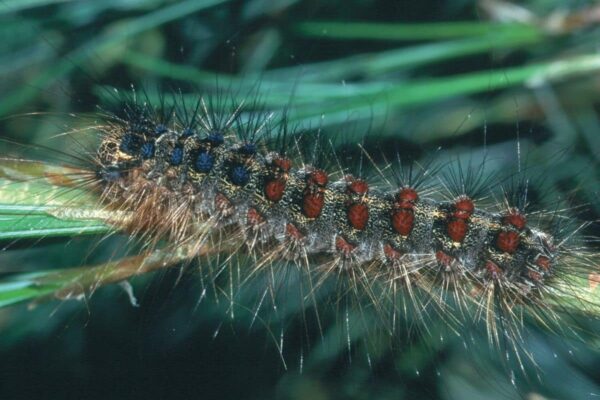Spongy moth
About This Species
Spongy moth is native to Europe, Eurasia, and North Africa. It is not established in BC but is widely spreading the Eastern United States and Canada. Canadian and US agencies strives to find and eradicate this pest. While Spongy moth populations are found each year in BC, so far it has not become permanently established.
Spongy moth caterpillars have been known to feed on over 300 species of deciduous and coniferous trees. Preferred hosts include maples (Acer spp.), oaks (Quercus spp.), birches (Betula spp.), White pine (Pinus strobus), and White spruce (Picea glaucus).
In their invasive range in North America, Spongy moths are known to defoliate entire trees by feeding in large numbers. If they were to establish in BC, they would likely cause significant economic damage to our forestry and tree nursery industries, as well as residential properties. Spongy moths are designated as a Provincial EDRR species by the BC Provincial Priority Invasive Species List.
How to Identify
Female and male moths are visually different. Female moths are larger, with a 5.0 cm wingspan, with white wings with a dark zig-zag pattern across the middle, and yellow-white hair on their head and thorax. Males have a 2.5 cm wingspan, with brown wings, brown hair on their head and thorax, and feathery antennae.
Caterpillars are black and brown and 5-10 mm long when first hatched. Mature caterpillars are are up to 6 cm long with two rows of blue and red spots going down their back.
Eggs are laid in a beige mass 3-8 cm in diameter attached to a flat surface, such as a tree trunk or side of a building. Each egg mass may contain 100-1000 eggs. Spongy moths egg masses may be attached to shipping containers or vehicles, which can help spread them to new areas.
Take Action
Prevention is the best approach.
-
If you need advice about invasive species on your property or you are concerned about reported invasives in your local area, contact your local government or regional invasive species organization.
REPORT TO PROTECT BC’S BIODIVERSITY

Use the app
Observe and report to protect BC’s biodiversity

Report through this website
Use our form to tell us what you’re seeing and where.




